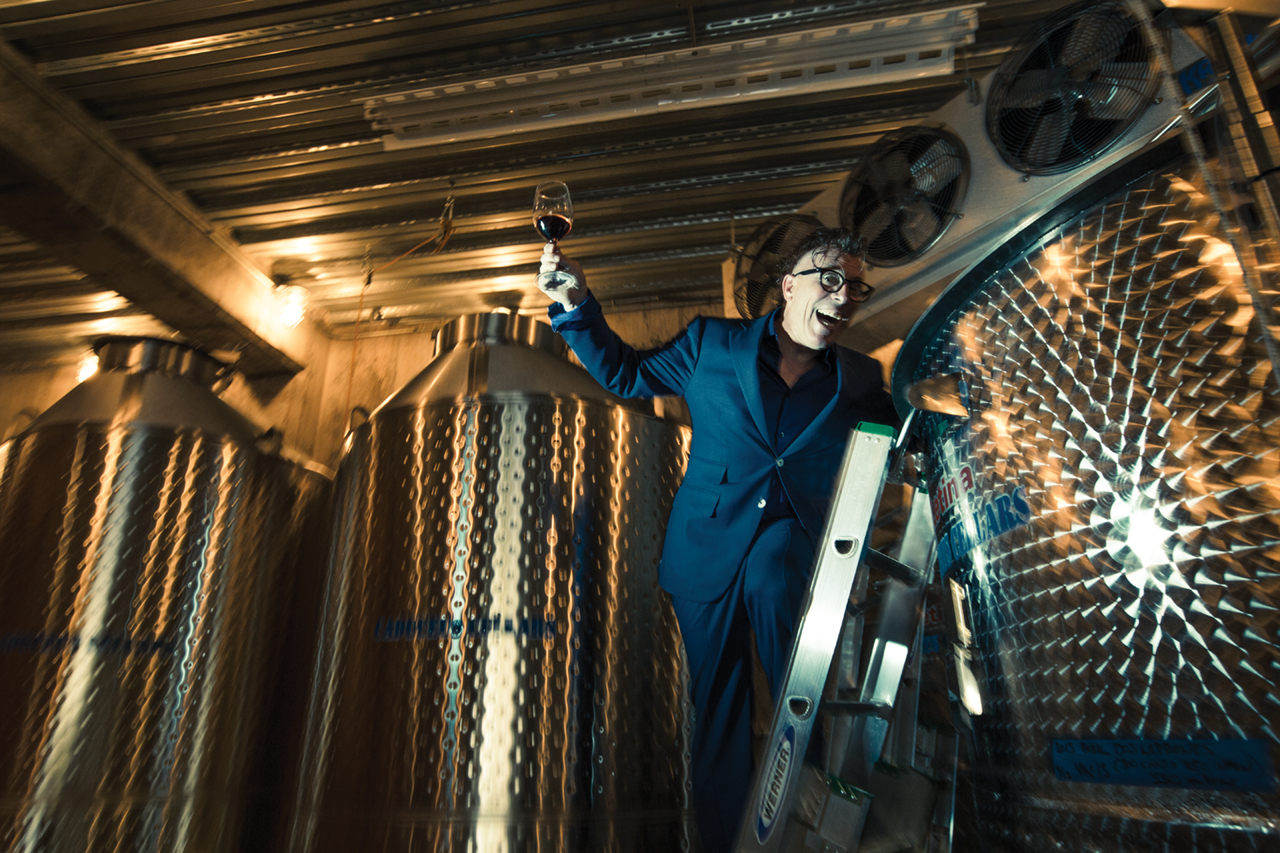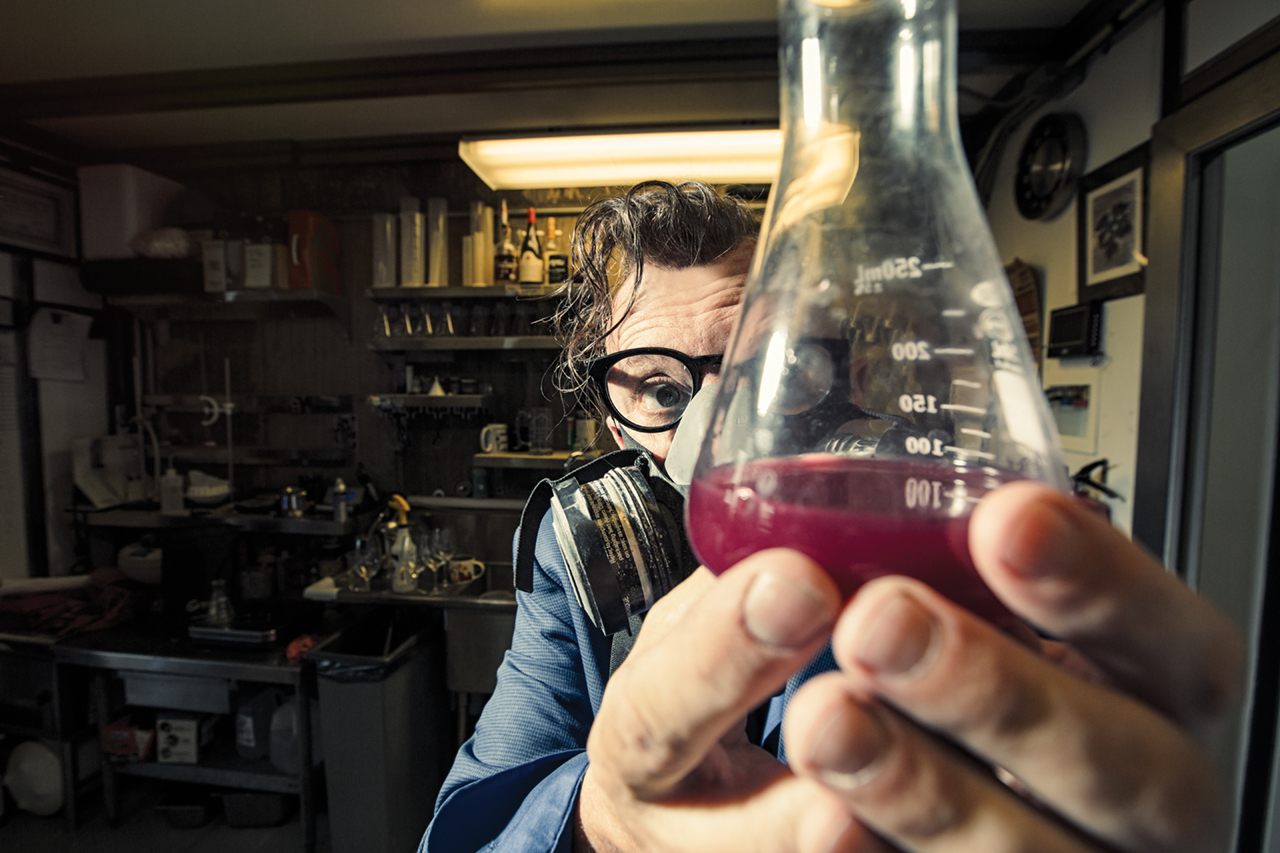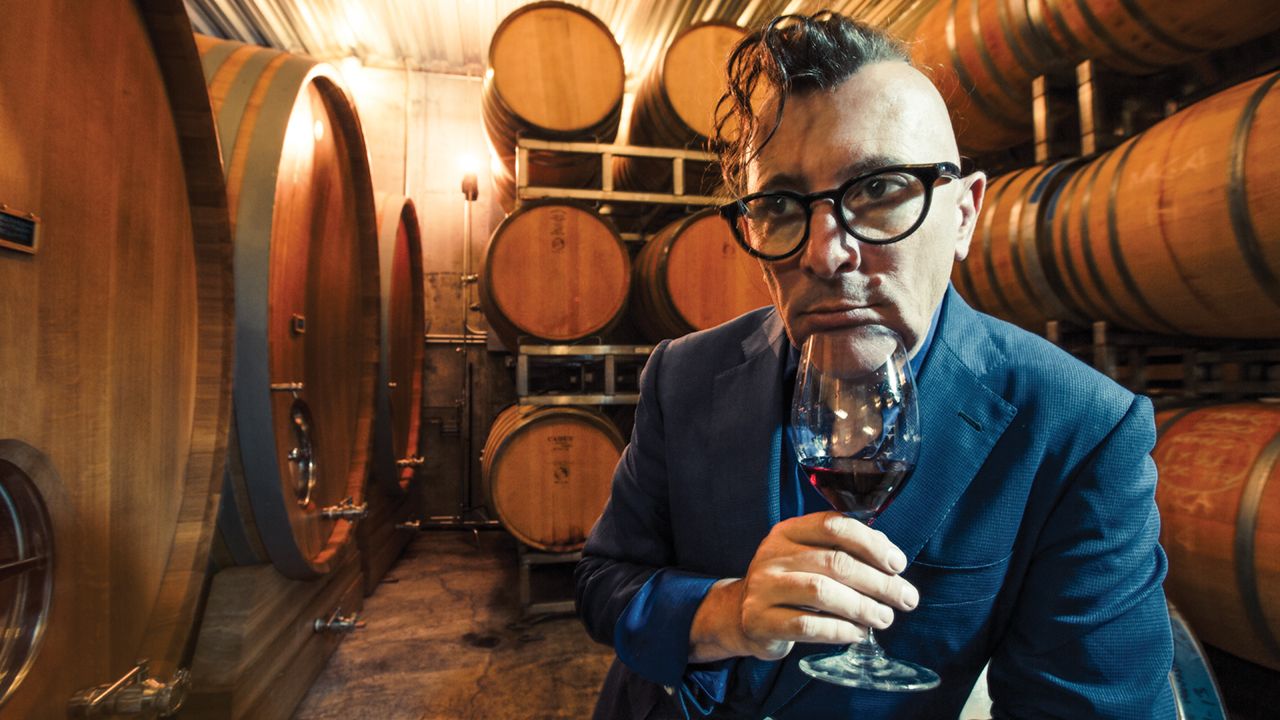What made you want to get into wine making?
“I don’t know! I think it’s one of those things that kind of just finds you. Looking at the land around northern Arizona, it just seemed like it had potential for grapes. It was a wine-growing region at the turn of the century, but then Prohibition came along, and the Depression, and World War II, which interrupted a return to planting grapes.”
How do you decide what kind of wines to produce?
“I have a lot of varietals planted – Italian and Spanish, mainly – but a few French, of course. Having all of those things planted and just seeing them through from start to finish, you start to get a sense of what works and what doesn’t. Pinot Noir doesn’t work. Zinfandel and Primitivo don’t work. But almost everything else does.”

Was it a bit of trial and error?
“You have to go with what the soil’s going to give you – it’s Mother Nature, you can’t force your will on her. You just put a bunch in, and in a way just guess. But, you know, looking at the soil, looking at the area, it seemed like the wise bet would be something southern Rhône, something Italian and something Spanish, and that proved to be true. So it’s being aware of what the soil looks like.”
What’s a typical harvest day like on your vineyards?
“If we’re picking local fruit, within a 30-minute drive from our northern sites, then we’ll pick that morning. And then, depending on the temperature and condition of the fruit, process it that day. But generally, I’ll put it in a cold room or leave it in the cold truck overnight to do a cold soak. Assuming we’ve got fruit from southern Arizona, it’ll probably have sat in the truck overnight, having been tipped in the previous morning, so it’ll get about 12-18 hours of cold room sitting. So at 7.30am, we’ll get all the equipment set up, and then de-stem and process into bins that morning. A typical day is just an early morning, because you never know what’s going to happen!”

How physically demanding is it?
“It can be physically demanding, but I’ve always been a fan of working smarter rather than harder, so having the right equipment around helps. A lot of the physical labour can be somewhat avoided, but you still have to dig out the tanks, you still have to do punchdowns and those sort of things, and you’re pushing things around with a palate jack.”
Um, what’s a ‘punchdown’?
“When the fermentation starts, it creates C0₂, so in converting the sugars to alcohol, C0₂ gathers in the bins and pushes the skins up so they form a cap. So what you do is push that cap back down into the juice, because the more juice contact you have with that skin, the more flavour and colour you get.”
What advice would you give to a novice wine maker?
“Pay attention to people who’ve done it. Ask questions of people locally that are making wine around you. Pick their brains, because they have on-the-ground experience. Books aren’t going to really help you. Get hands-on; having an education is important, but education, generally speaking, is only part of it. The biggest part is hands-on.”
For more info on Maynard’s wine visit WWW.CADUCEUS.ORG

GET INVOLVED!
THE STARTER KIT
The fine folks at LoveBrewing have a host of decent start-up kits for budding wine enthusiasts, so hop over to www.lovebrewing.co.uk and see which one works best for you. Don’t blame us if you end up ruining a few thousand grapes.
THE COURSE
Once you have ruined a few thousand grapes and decide to ask the experts, you’d best head to Plumpton College in East Sussex, who offer undergraduate degrees in Wine Business and Production: www.plumpton.ac.uk
THE FESTIVAL
The Winchester Wine Festival takes place every winter and features hundreds of delicious grapey delights on offer. Try and enter your own creation for sampling or just head up and get wankered. More deets at www.thewinefestival.co.uk

